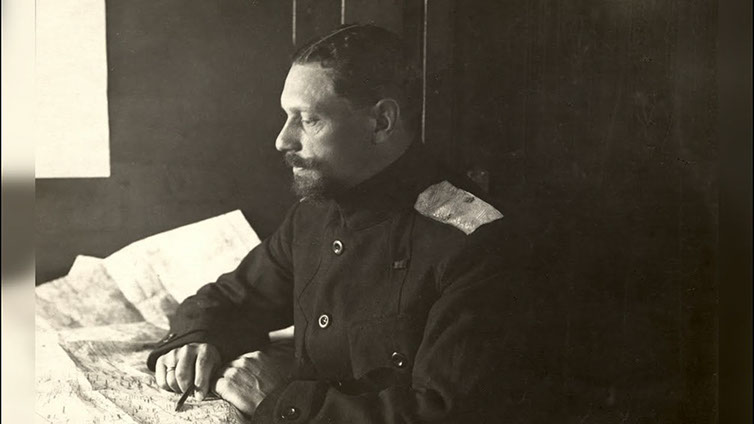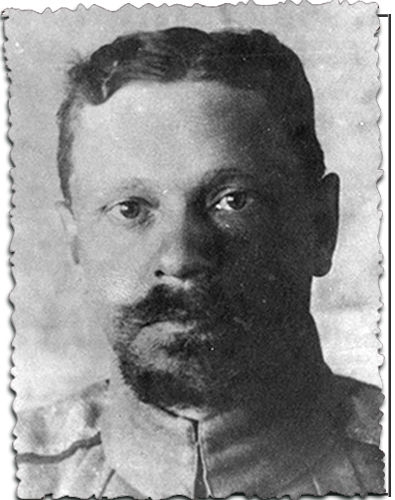



PERSONALITIES
1883–1920
KAPPEL
VLADIMIR
Commander of the People’s Army of the Committee of Members of the Constituent Assembly (Komuch)
Commander-in-Chief of the Eastern Front of Aleksander Kolchak’s Russian Army

Vladimir Kappel was born into a noble family in Tsarskoe Selo. He entered military service in 1899. Kappel graduated from the Saint Petersburg 2nd Cadet Corps (1901), Nicholas Cavalry School (1903), and Nicholas General Staff Academy (1913), the Officer Cavalry School (1914). A participant of World War I. Lieutenant Colonel (1916).
He was in the Soviet military service for a short time. In June 1918, during the uprising of the Czechoslovak Legion, Kappel led a detachment of volunteers in Samara, fought in the ranks of People’s Army of the Committee of Members of the Constituent Assembly (Komuch). He supervised the capture of Syzran (June 11), and Simbirsk (July 22). After that, he was appointed Commander of the People’s Army. The greatest success of the latter was the capture of Kazan (August 7), along with the gold reserves of the Russian Empire. In the autumn of 1918 of the People’s Army suffered a series of defeats inflicted by the forces of the Eastern Front of the Workers’ and Peasants’ Red Army, left Syzran and Samara and retreated to Ufa.
In November, Kappel recognized the power of Aleksander Kolchak. From the beginning of 1919, he held the post of Commander of the 1st Volzhsky (“Kappel’s”) Corps of the Western Army of the Russian Army, since July Commander of the Volga group of forces of the 3rd (former Western) Army operating in the area around the Ural mountains, in the Urals, and Western Siberia. He was defeated by the Red Army forces under the command of Mikhail Tukhachevsky during the Chelyabinsk operation (July–August 1919).

In October–November 1919, Kappel was Commander of the Moscow Army Group (2nd and 3rd Siberian armies of the Eastern Front), since November Commander of the 3rd Army of the Eastern Front of the Russian Army. Lieutenant General of General Staff (1919). Upon the abandonment of Omsk (December 1919) and a series of heavy defeats of the Kolchak troops, he was appointed Commander-in-Chief of the Eastern Front.
In January 1920, he managed to withdraw the remnants of Aleksander Kolchak’s troops from the encirclement near Krasnoyarsk. During the march to Irkutsk, while crossing the ice of the Kan River (a tributary of the Yenisei), he fell into an ice hall, froze off his legs, which caused gangrene. He had his feet partially amputated, caught double pneumonia, and died. Kappel was first buried in Chita, and in autumn 1920, his ashes were transported to Harbin. In 2007, the remains were interred at Donskoy Monastery in Moscow.

Vladimir Kappel during the Siberian Ice March. 1920.
SMPHR. F.III-15267


General Vladimir Kappel at the Headquarters carriage. 1918.
SMPHR. F.IX Vs-29277



General Vladimir Kappel. 1919.





Whites
© 2021 The State Museum of Political History of Russia. All rights reserved. See Website Terms of Use on About Project page


